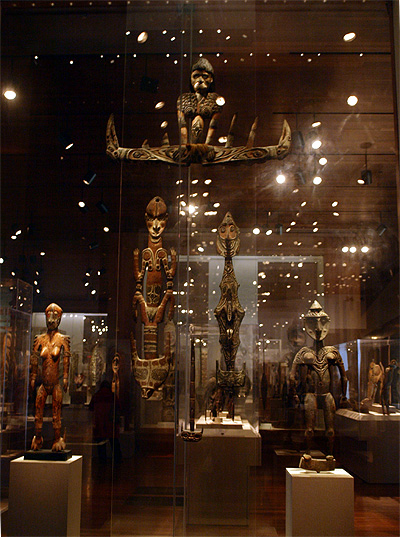
This past weekend saw a return to the de Young museum's ethnographic collections, first profiled here three years ago. This time I was armed with a new image-stabilized camera to meet the challenge of the museum's "no tripod, no flash" photography rules, with the results found here.
The collections are drawn from Africa, pre-Columbian Mexico, and especially New Guinea.
Most of these objects originally had specific roles in the spiritual life of the community. They have fascinated Westerners for centuries as strange objects from exotic realms. To some, they were grotesque pagan idols, representing ignorance and savagery, and to the Romantics a glimpse into a purer human, one more deeply connected to the basics of existence from which we as industrialized people have become alienated. Anthropologists collected, identified, classfied, and recorded these objects, as a biologist would do with natural specimens, and they are often still displayed in natural history museums. In the early modern era, artists, especially those connected with the surrealist movement, saw these object as having genuinely inspirational aesthetic qualities which could be appreciated independent of their spiritual function. Finally, oceanic imagery devolved into kitsch with the development of the Tiki culture.
One function of a museum is to try stop the passage of time, to preserve decaying things under bell jars or pickled in brine, bringing dead things back to life in dioramas, preserving the artifacts of the past. Encased in the sleekly modern architecture of the museum we see organic figurines, made of wood, clay, stone, or feathers, once living spiritual objects, extracted from dying cultures, forever frozen in action in their vitrines.
For another photographic perspective on this collection, see here.
The de Young's New Guinea collection is documented here
The Pitt Rivers Museum in Oxford contains a wealth of ethnographic artifacts in a Victorian setting. Its Web site offers a
The Metropolitan Museum in New York City has a wonderful collection of African, Oceanic, and pre-Columbian artifacts, nicely documented here.
An excellent reference on the influence of "primitive" art on 20th century artists can be found here.
No comments:
Post a Comment